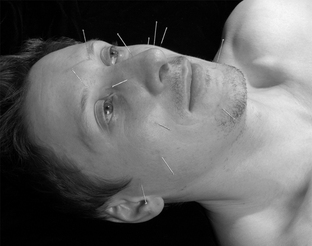CHAPTER 13 Acupuncture Therapy for Non-pain Symptoms
INTRODUCTION
As we have described in Chapters 1, 2, 3, 5, and 6, the HAs gradually become tender in a predictable pattern as the body’s homeostasis decreases, and our body manifests these acupoints to reflect its own pathophysiologic decline. The SAs pinpoint the particular nerves, muscles, and other soft tissues directly affected by the injury, and PAs are selected to assist the SAs. The PAs and SAs belong to the same spinal segment, and needling PAs relaxes the muscles and soft tissues and improves blood circulation at the location of the nerve root; this process helps to desensitize the sensitized nerve endings. Also, PAs are located closer to the autonomic ganglionic chain; clinical evidence has shown that needling PAs balances the mutual interaction between sympathetic and parasympathetic nerves.
Some diseases or diseased organs may not produce detectable tender acupoints on the body surface, especially at an early stage of the disease. In these cases, selecting proper PAs provides sound therapeutic results. For instance, PAs along vertebrae T1 to T7 should be selected for respiratory problems such as asthma and PAs along vertebrae T5 to T12 should be selected for stomach problems such as a gastric ulcer. Knowledge of segmental innervation of internal organs helps the practitioner to select the proper PAs (see Chapter 5).
ASTHMA
Treatment Protocol
The patient lies in the prone position. Use the following acupoints:
SINUSITIS
Treatment Protocol
The patient takes the supine position. Use the following acupoints:
To avoid bruising the patient’s face, use needles 1.5 cm in length and 0.18 or 0.20 mm in diameter.




